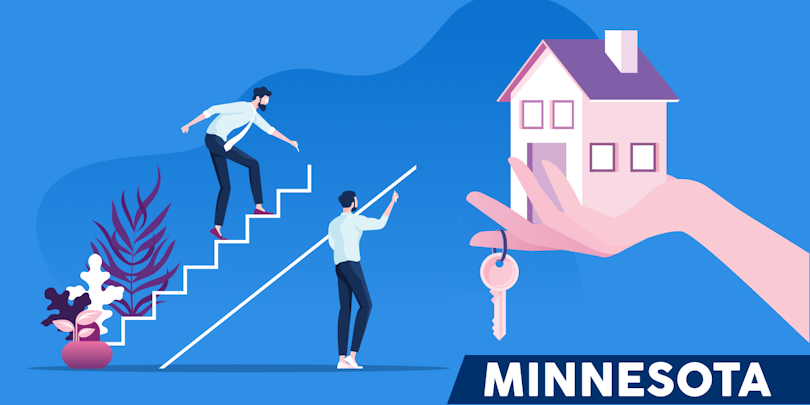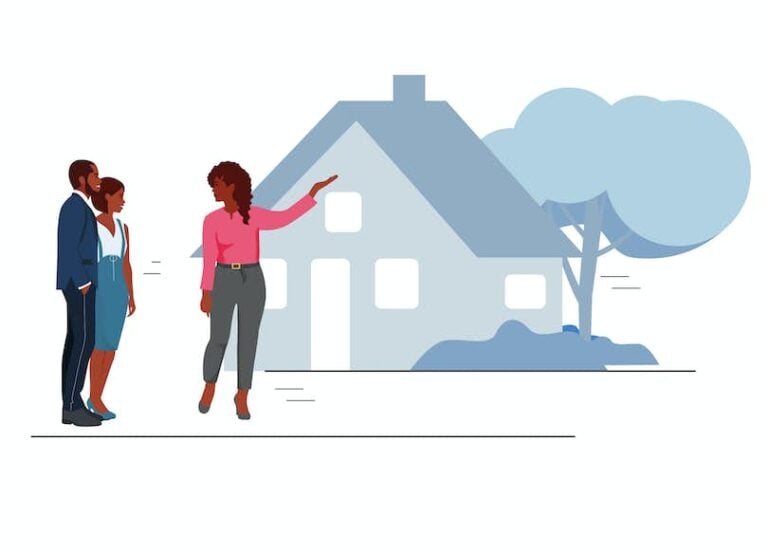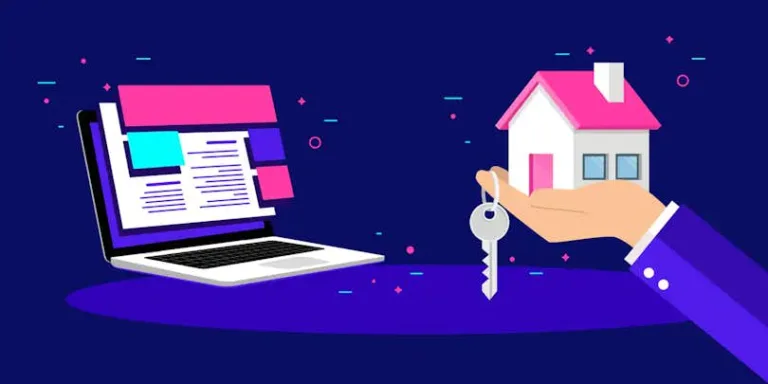
✍️ Editor's note: We strive to provide objective, independent advice. When you decide to use a product or service we link to, we may earn a commission. Learn more.
Now that the housing market is finally calming down after the pandemic[1], buyers are facing a new challenge: Soaring mortgage rates.[2]
In Minnesota, the average 30-year fixed mortgage rate is 6.94% — up from 2021's historic lows. This raises the average monthly mortgage payment to $1,709 (assuming a 20% down payment at the median home value).
But buying a home in Minnesota is still possible, even for first-time home buyers. Many markets are seeing frequent price drops and fewer offers, giving motivated buyers the upper hand in negotiating for the best price.
In this guide, you’ll learn how to buy a house in Minnesota with confidence no matter what the market brings. Learn why you can trust our advice.
Whether you're actively house hunting or just starting to browse homes on Zillow, it's never too early to find a great local realtor to guide you on your search. An experienced agent can help you navigate a tricky housing market, explore your financial options, and negotiate the best deal possible.
Best of all, hiring a real estate agent comes at no extra cost to you — since the seller typically pays both their listing agent and your buyer's agent.
Ready to find a great local realtor, but not sure where to start? The best (and easiest!) option is to try a free agent matching service like Clever Real Estate. Answer a few simple questions about your home buying goals, and Clever will match you with hand-picked agents from Keller Williams, RE/MAX, and other top brokerages in your area. Find a top local agent and make your home buying dreams a reality today!
Step 1: Save for a down payment
🔑 Key takeaway:
Your down payment can be less than 20% of the purchase price — $64,607 for the typical home in Minnesota — but you'll have to purchase mortgage insurance and pay more interest over the life of your loan.
Your down payment is the first part of your home's purchase price that you pay at closing. Your mortgage lender will pay the remaining balance.
Typically, mortgage lenders in Minnesota want you to contribute 20% of the purchase price as a down payment. That would be $64,607 for a $323,034 home — the typical home value in Minnesota.
However, you have options to lower your down payment amount.
Government backed loans, like VA and FHA loans, allow you to contribute 0% and 3.5% of your home's purchase price respectively. Even conventional loans allow for down payments as low as 3-5% (though the minimum varies by lender).
But making a down payment of less than 20% comes with some risks.
First, because you're borrowing more money, you'll have a higher monthly payment and pay more in interest over the life of your loan.
Second, you may have to purchase mortgage insurance.
Conventional loans require private mortgage insurance (PMI) until your loan balance reaches 80% of the purchase price. FHA loans, on the other hand, require a mortgage insurance premium (MIP) for the life of your loans.
Mortgage insurance costs around 1% of your mortgage balance annually. However, rates vary based on your down payment and credit score. Typically, your mortgage insurance payment is added to your mortgage payment each month.
VA loans don't charge mortgage insurance. Instead, you'll pay a VA loan funding fee at closing, which can range from 1.4% to 3.6% of the purchase price.
» READ MORE: Everything you need to know about low-income home loans
Minnesota down payment assistance programs
The state of Minnesota offers numerous down payment assistance (DPA) programs for homebuyers who need extra financial assistance. Eligible participants may receive a grant or second mortgage to help cover closing costs or a down payment.
Here are just a few DPA programs in Minnesota that you can apply for:
Minnesota Housing Monthly Payment Loan
Minnesota Housing offers three DPA programs for buyers with a Minnesota Housing first mortgage.
The Monthly Payment Loan offers a second mortgage of up to $17,000 for participants of the Start Up or Step Up program. The loan is to be paid each month over ten years at the same rate as your first mortgage.
Minnesota Housing Deferred Payment Loan
Minnesota Housing's Deferred Payment Loan offers a loan of up to $11,000 to first-time home buyers participating in the Start Up program.
The financial aid is given as a second interest-free mortgage. Payments aren't required until you refinance, resell, or pay off your home.
Minnesota Housing Deferred Payment Loan Plus
Minnesota Housing's Deferred Payment Loan Plus program offers a loan of up to $15,000 to first-time home buyers in the Start Up program.
Financial assistance is provided as a second interest-free mortgage. No payments are required until you resell, refinance, or pay off your first mortgage.
U.S. Department of Housing and Urban Development
A list of additional DPA programs in Minnesota can be found on the state HUD page here.
Step 2: Find a great real estate agent in Minnesota
🔑 Key takeaway:
Interview multiple agents to find one who knows your target neighborhoods, has experience in your price range, and communicates well.
Your real estate agent will be your main ally during the home buying process. Besides finding and showing you properties, your agent will help you make offers, negotiate contracts, and navigate the closing process. Plus, they can recommend other service providers like title companies and inspectors to help you buy your home in Minnesota.
Don't rush into choosing an agent. Instead, take the time to research and interview multiple real estate agents who have experience in the neighborhoods you're interested in. You should pay attention to a realtor's:
- Years of experience
- Number of transactions in the last year (the more the better!)
- Experience in your price range
- Overall review score
- Individual reviews and complaints
Finding a great real estate agent shouldn't be complicated. Let Clever Real Estate do the hard part and match you with experienced local realtors who are experts in your market.
Enter your zip code below to compare top agents from trusted brands like Keller Williams, Berkshire Hathaway, and Coldwell Banker, then choose the best fit for you. It's 100% free, and there's no obligation.
Step 3: Get preapproved for a mortgage
🔑 Key takeaway:
Once you're preapproved for a mortgage, it's imperative that your financial situation doesn't change. If your credit drops, it can derail the process and keep you from closing on your house.
Here are some easy ways to ensure your credit doesn't change after you receive your preapproval letter:
- Avoid opening new credit accounts
- Don't close any accounts that have been open for a long time
- Make all of your credit card payments on time
» LEARN MORE: What factors do mortgage lenders consider?
A mortgage preapproval letter is an offer to lend you up to a certain amount of money to purchase a home. It shows sellers that you are a serious buyer who is financially qualified to make an offer on a home.
Most sellers in Minnesota will require preapproval before showing you their home.
You don't have to decide on one lender right now. In fact, you should compare interest rates and preapproval amounts from several lenders to make sure you're getting the absolute best terms when you buy your Minnesota home.
Step 4: Choose the right location
🔑 Key takeaway:
Search for neighborhoods where:
- Home prices are within your price range
- Home values are on the rise
- The local amenities support your lifestyle
Currently, the typical home value in Minnesota is $323,034, but don't worry if that doesn't perfectly match your budget. Home prices vary dramatically from city to city and even from neighborhood to neighborhood!
Also, look at past home value trends. This will give you an idea of how much your home's value could go up over the next few years.
To give you an idea of how appreciation could impact what your house is worth in the future, consider these examples from three neighborhoods in Saint Paul:
Home value appreciation in Saint Paul
| Neighborhood | 2015 | Current | Appreciation |
|---|---|---|---|
| Payne Phalen | $139,850 | $241,469 | 42.1% |
| Greater Eastside | $145,731 | $257,724 | 43.5% |
| Highland | $301,375 | $432,545 | 30.3% |
Step 5: Start house hunting in Minnesota
🔑 Key takeaway:
It’s a strong market in Minnesota — listing prices are shooting up and inventory continues to dip. You may have a challenging time finding a house that meets all your requirements. Check out all the listings that your realtor shows you, even if it’s not exactly what you think you want. If you keep an open mind and can be a bit more flexible with your budget, you may just find a decent listing worth buying.
Searching for homes in Minnesota is the fun part of the home buying process! You'll get to look at a variety of homes and discover what you really want in a home.
Make a list of everything you want in a home and prioritize them. At the top of the list should be the items that are most important to you. This will help you separate your "must-haves" from your "nice-to-haves."
Your agent can help you understand if your wants are realistic for your budget and favorite neighborhoods or if you need to rethink what you're looking for.
Look at current housing inventory
The timing of your house hunt in Minnesota can have a big impact on your number of options. For example, in Minnesota, June has historically seen the most homes for sale. Searching in this season could give you more options and a greater likelihood of finding your dream home.
On the other hand, December gives you the fewest choices in Minnesota. Historically, there are 66.5% fewer homes for sale than during Minnesota's peak season.
Housing inventory in Minnesota by season
Step 6: Make an offer
🔑 Key takeaway:
Minnesota’s market is very active, and with inventory dipping, great listings are being snatched right off the bat. If you find a house that you like, be ready to act quickly — you may even have to put in an offer on the same day you view it. Also, expect fierce competition, so work closely with your agent to come up with a competitive offer that will catch the seller’s interest.
Once you find a Minnesota house you love, it's time to make an offer. Your real estate agent will help you write a compelling offer that gives you the best shot of convincing the homeowner to sell to you.
Currently, in Minnesota, homes stay on the market for 59 days before going under contract. However, every market goes through seasonal changes. During busier months, homes get snatched up more quickly than others.
Historically, Minnesota homes sell fastest in June, where the average property is only on the market for 44 days. If your home search falls around this time, you should be prepared to move quickly and potentially make offers on several homes before yours is accepted.
On the other hand, if you buy in January, you have a bit more time to search. Homes typically stay on the market 28 days longer than Minnesota's annual average.
Average time homes spend on market in Minnesota
» LEARN MORE: What should an offer include?
Step 7: Inspections and appraisals
Inspections and appraisals are an opportunity for you to better evaluate the home's condition and value before officially purchasing it. You may have an opportunity after this step to renegotiate the terms of your contract with the seller if something unexpected pops up.
🔑 Key takeaway:
- Inspections: A licensed professional checks the house for any unseen, unexpected, or potential issues.
- Appraisals: An appraiser hired by your lender examines the house to determine how much it's worth.
Home inspections in Minnesota
Having your Minnesota home inspected by a licensed inspector gives you peace of mind about the condition of the property before you commit thousands of dollars to purchase it.
Your inspector should check out the following parts of the property:
- Roof
- Foundation
- Electrical system
- HVAC system
- Plumbing
If the home has a septic system, you should also pay for a septic inspection to make sure it doesn't have any problems that wouldn't be covered in a typical home inspection.
Minnesota-specific inspections
Minnesota law requires sellers to disclose all known issues with a property to potential buyers. However, it's possible that there are undetected issues that the seller isn't aware of. To avoid expensive repairs later, it's highly recommended to have additional inspections done before closing on a home.
In addition to a general home inspection, here are a few tests you should consider:
- Radon testing: Radon can be dangerous at elevated levels, so homes should get tested for the substance annually. If the seller hasn't conducted a radon test recently, homebuyers are strongly urged to get a test done before closing.
- Pest inspection: Some lenders require buyers to have a pest inspection completed, but all homebuyers should consider doing one. Catching potential infestations before closing will save you from expensive repairs and health hazards in the future.
Appraisals
Appraisals determine the value of the property. If you're using a mortgage to buy your new home, your lender will order an appraisal to make sure the home is worth the money that it's loaning you.
» LEARN: 3 options for buyers after a low appraisal
Step 8: Close on your new home!
🔑 Key takeaway:
Before you close on your new home, you and your agent will do a final walkthrough of the property to ensure that it's still in the expected condition.
To officially close on your Minnesota home, you'll meet at the title company to process some legal paperwork and settle your closing costs. It's recommended to review the documents before the closing date to make sure you fully understand everything before signing.
Expect to spend about an hour reading and signing the legal documents. There will be several important sections to double-check, including:
- Your final loan application
- The deed
- The mortgage promissory note
- The disclosure statements
Once you complete the paperwork, you’ll have to pay your closing costs. The title company will make this easy by collecting the total amount you owe and then distributing the funds to the right recipients.
Closing costs for buyers can usually be divided into four main categories:
- Lender fees: Fees paid to your mortgage lender for originating and underwriting your loan. Lender fees can also cover other costs related to your loan, such as appraisal and survey fees.
- Title and escrow charges: Charges for the title company's services, including conducting the closing process, performing the title search, and providing title insurance.
- Prepaid costs: Ongoing costs of homeownership. Lenders often require new homeowners to pay for certain expenses up front, such as property taxes and homeowners insurance.
- Other closing costs: Miscellaneous fees that can vary according to each buyer's needs. Some common costs may include natural disaster certification fees or real estate attorney fees.
Buyers in Minnesota typically pay 3–5% of the purchase price in closing costs. For a $323,000 home — the typical home value in Minnesota — that's between $9,690 and $16,150!
Ready to make your home-buying dreams a reality? The first step is to find a top local realtor who's an expert negotiator with proven experience in your market.
Enter your zip code below to compare the best agents from trusted brands like Keller Williams, Berkshire Hathaway, and Coldwell Banker, then choose the best fit for you. It's 100% free and there's no obligation.
Frequently asked questions
Do I need a real estate attorney in Minnesota?
Minnesota does not require you to hire a real estate attorney to buy a home. However, depending on your circumstances, you might consider hiring one anyways. If you do, treat the process similarly to hiring an agent. Interview multiple attorneys and proceed with the one that best meets your needs.
What are the steps to buy a house in Minnesota?
- Save for down payment
- Get pre-approved for a mortgage
- Choose your preferred Minnesota neighborhoods
- Partner with the right real estate agent in Minnesota
- Go house hunting
- Make a strong offer
- Inspections and appraisals
- Do a final walkthrough and close
Does Minnesota have a first time home buyer program?
Yes, Minnesota Housing offers the Start Up program to eligible first-time buyers borrowing from approved lenders. The program provides home loans with low interest rates and three down payment assistance options.
To qualify for the program, your income must not exceed $120,600. The purchase price of your home cannot exceed $311,900 for counties outside the metro area. If the property is in one of the 11 metro counties, the purchase price limit is $352,300.
Why trust us?
Clever Real Estate is a free agent-matching service that has helped more than 82,000 people buy and sell homes. We partner with over 2,700 top-performing agents nationwide at national brokers including Keller Williams, RE/MAX, Century 21, and more. We also help buyers save money with cash back after closing — no strings attached.
We’ve earned buyers’ trust with a rating of 4.9 out of 5 stars on Trustpilot and over 1,800 customer reviews.
Our team of industry-leading researchers is committed to making homeownership more accessible by educating buyers through guides like this one. We've spent thousands of hours analyzing publicly available data, surveying consumers, and interviewing industry experts. Our research has been featured in The New York Times, Business Insider, Inman, Housing Wire, and many more.





